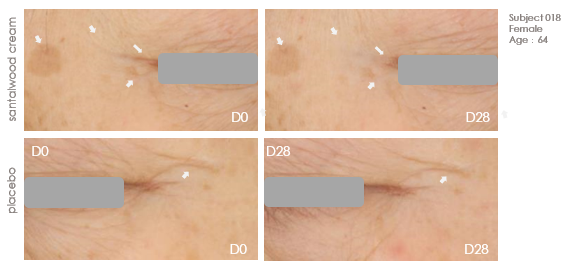by: Ashland
Sandalwood has a 4,000-year-old history: the oil was used in religious rituals, and many deities, temples and sacred carvings were crafted from its softwood. It was one of the most common incenses found burning in ancient Hindu and Buddhist temples around India and China and is still used in temples today as it is believed to bring one closer to one’s divine nature. Sandalwood is highly prized for its oil that forms only with the right mix of genetics and environmental factors. The oil is the tree’s defense mechanism against disease and stress which helps explain many of the medicinal properties for which it has been used over the centuries. In addition to its spiritual and medicinal properties, its intensely sweet, soft, woody, and slightly musky aroma made it a prized ingredient for luxury perfumes and cosmetics from ancient India, to Egypt, to China, and to the rest of the world.

The forest therapy trend inspired the development of this new biofunctional. Forest Therapy, under the umbrella of nature or ecotherapy, has existed in Japan since the Forest Agency of Japan promoted Shinrin-yoku (forest bathing) as a practice for healthy living and part of a forest therapy program. The practice of shinrin-yoku is the art and science of how trees can promote health and happiness. Breathing in a forest is a possible mechanism that may induce the health benefits of forest bathing. Forests often deliver large amounts of odorant molecules, identified as “forest VOCs”. These odorant molecules serve several functions including tree defense and communication. Inhaling some forest odorant molecules can result in antioxidant and anti-inflammatory effects, it may be also beneficial to improve cognitive performance by decreasing mental fatigue, increasing relaxation and mood. Forest bathing continues to grow in interest and stature and is now a new trend in the beauty industry.
Santalwood™ biofunctional is obtained from Santalum album sustainably grown in Australia in a plantation using regenerative agriculture techniques, with rotational re-planting after harvest and water-efficient irrigation techniques. There is full control over the entire supply chain from planting, growing, and harvesting the sandalwood to processing the essential oil by steam distillation without adding any chemicals during the process. Wood chips depleted in oil are used for the extraction of Santalwood™ biofunctional by supercritical CO2 technology. The oil-soluble extract is then solubilized in a bio-based solvent. Santalwood™ biofunctional is part of a circular economy model, creating value out of a by-product, with minimal use of natural resources.

Due to its predictive potential, Artificial Intelligence (AI) was used to explore large datasets and to detect concealed patterns, drawing predictions that only the machine can discern. The analytical determination of the extract led to the identification of seventeen key phytocomponents with potential biological activity. Then, network pharmacology analysis was used to predict the potential skin biological activity. Predicted skin biological activities comprised: anti-aging (including senolytic activity, telomere protection, extracellular matrix organization), regulation of inflammation, response to various stresses, skin olfactory receptor modulation, skin barrier homeostasis (epidermal development and regeneration, cell-to-cell junctions), mitochondrial homeostasis, DNA repair, antioxidant defenses, sebum regulation, and hair growth and folliculogenesis. These predicted areas and the related genes constitute a pool of potential biological activities that can be further validated experimentally. The biological evaluations on different skin models highlighted the role of Santalwood™ biofunctional in increasing the olfactory receptors OR2AT4 for a better protection against environmental air pollution and for healthier aging.

These evaluations also showed the role of Santalwood™ biofunctional in reducing cell senescence and increasing cell longevity. Clinical studies on skin and scalp of Asian and Caucasian volunteers showed improved skin renewal and hair regeneration, well aging benefits with firmer and smoother skin, less visible fine lines and wrinkles and more radiant and glowing skin. The skin olfactory signature of aging was evaluated by measuring odorant molecules precisely produced by the skin with age. This new evaluation of skin aging revealed that Santalwood™ biofunctional could reduce the skin olfactory signature of aging.
Santalwood™ biofunctional is the first biofunctional to be developed by Ashland with Artificial Intelligence (Al) for well aging that helps transform skin’s appearance from dull and lifeless to vibrant and glowing.

